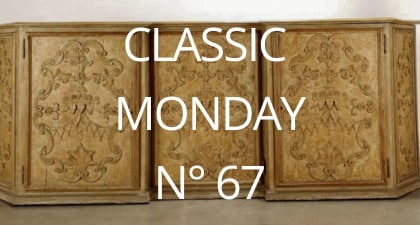
Between Appearance and Functionality
In the history of antique furniture, starting from the 17th century, representative furniture had a purpose more related to appearance than to functionality.
These were carved pieces, sometimes gilded, embellished with precious marble tops, veneered with rare woods like burl or exotic woods, often decorated with inlaid ornaments.
Lacquered furniture, on the other hand, were functional pieces made from softwood and simply lacquered to match the room’s color. These were mostly sideboards or wardrobes.

Among these, there were more interesting pieces for environments requiring both functionality and elegance, where furniture complemented the paneling of the rooms, typically libraries, pharmacies, walk-in closets, or collector spaces like Wunderkammer.
These rarer pieces followed the carvings and decoration of the room, appearing more sophisticated and refined.
Oriental Influence
At the end of the Baroque period, thanks to the influence of the East, the trend emerged of decorating cabinets with intricate lacquers, often painted in the Chinese style.
This led to the creation of a series of more elegant pieces, which, in the grandest examples in city palaces, reached levels of costly refinement.
Italian Productions
At the same time, in Italy, several simpler pieces were produced, with thin lacquers decorated with bunches of flowers, scroll reserves, and landscapes.
This type of painted, inexpensive furniture was used to furnish rooms according to the fashion of the time, with a low cost, allowing it to be easily replaced as trends changed.
These included writing desks, chests of drawers, bureau desks, mirrors, often coordinated with the room’s paneling.
Because these “economical” pieces were linked to fashion and could be easily replaced, it is rare to find examples of them today.
In fact, today, these pieces are some of the most sought-after and beloved by collectors.







